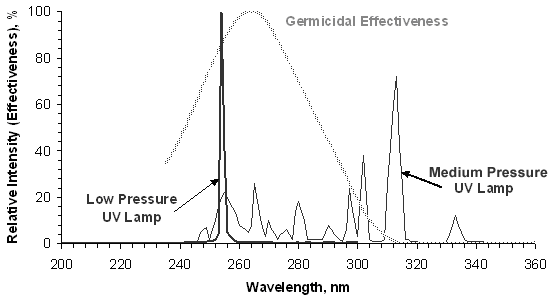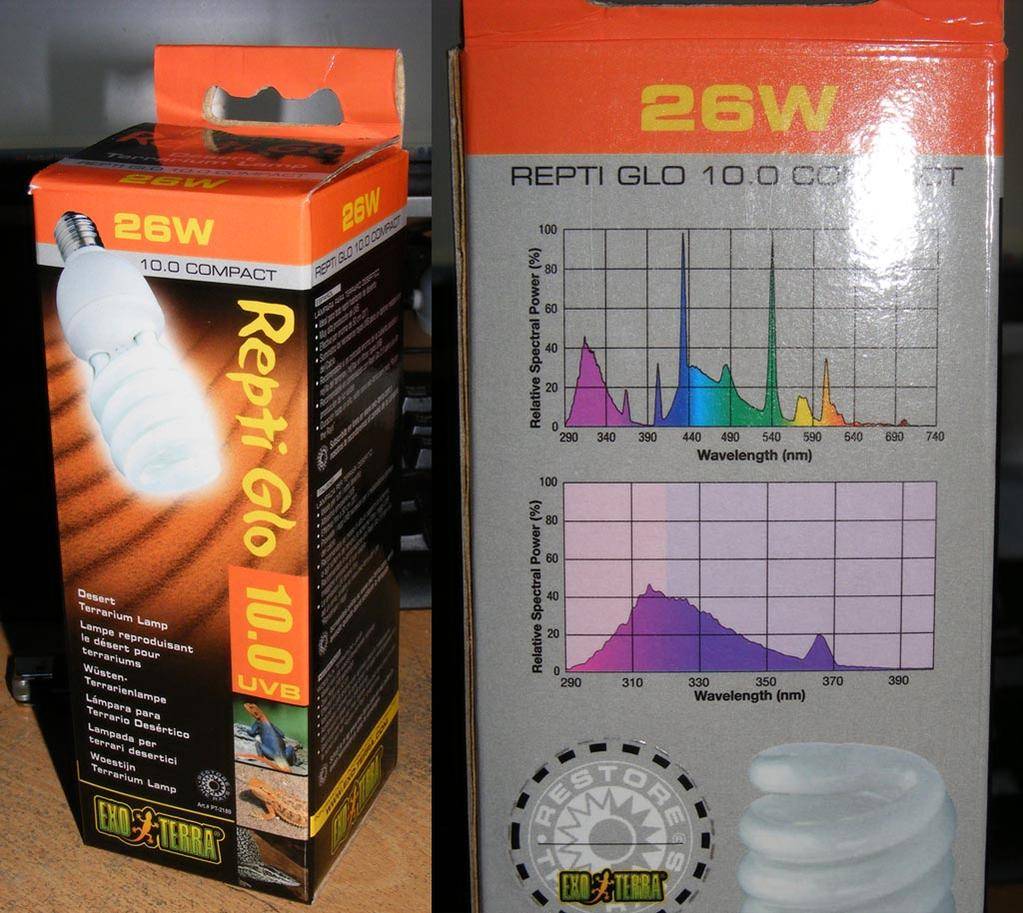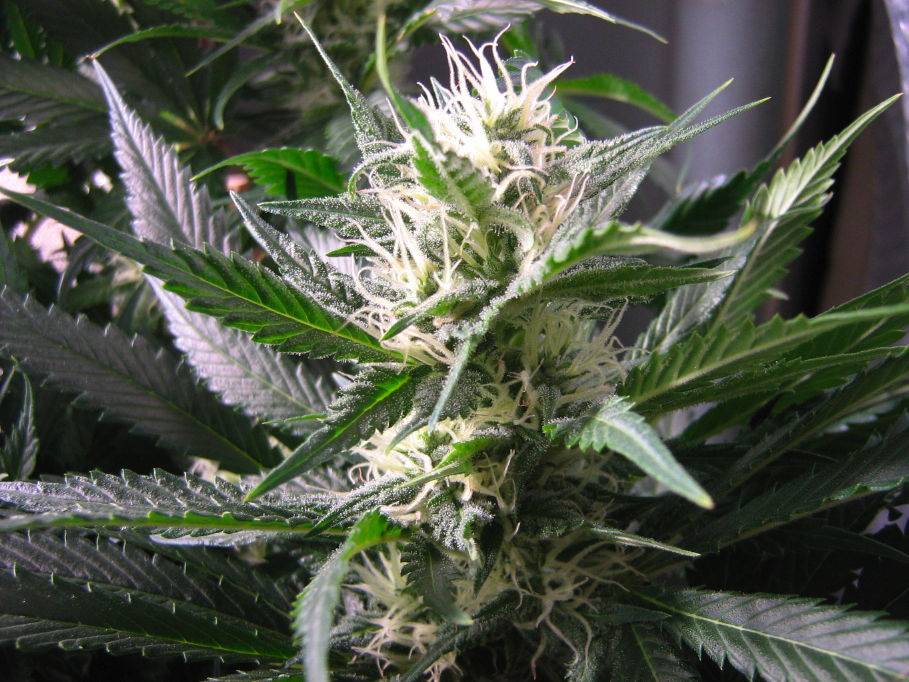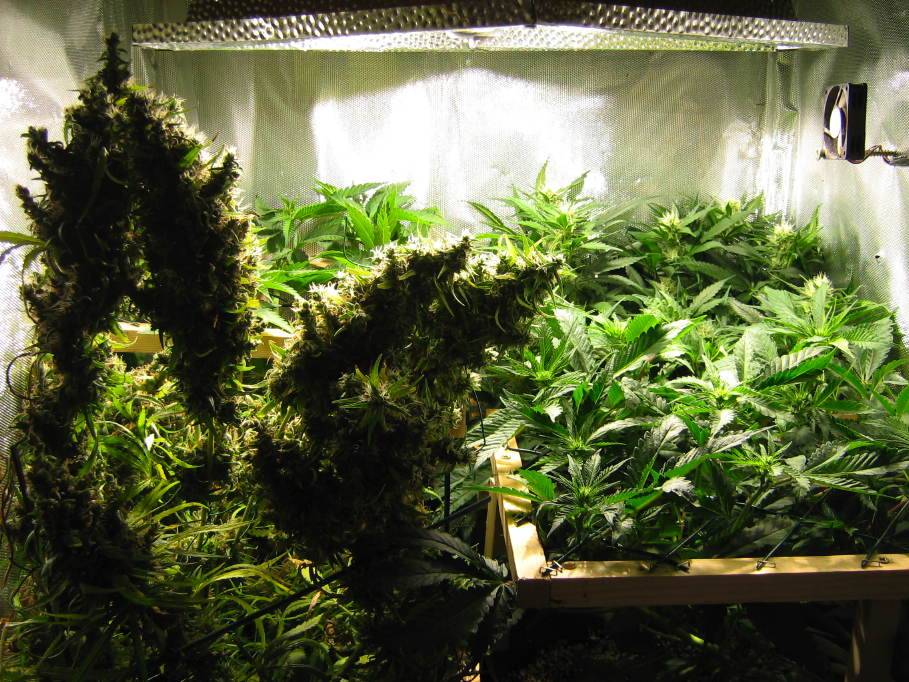I have a friend that works for oaksterdam, its becoming very popular to have your cannabis tested in the bay. it would seem that outdoor as well as seed plants produce more ancillary cannaboids than do indoor or clones respectively. So it would seem the best choice for cannaboid complexity is outdoor seed crops, though I believe organic/natural growing techniques also are a factor. Doesn't mean that UV will make better buds indoors just that there is some factor that is outdoors that we do not account for indoors.
-
As of today ICMag has his own Discord server. In this Discord server you can chat, talk with eachother, listen to music, share stories and pictures...and much more. Join now and let's grow together! Join ICMag Discord here! More details in this thread here: here.
You are using an out of date browser. It may not display this or other websites correctly.
You should upgrade or use an alternative browser.
You should upgrade or use an alternative browser.
UV Light and Terpenoids
- Thread starter GreenintheThumb
- Start date
SupraSPL
Member
I get zero UV reading 1 inch from a regular 25W CFL, but place the meter 1 inch from my 26W reptile CFL and I get a strong reading.
The regular fluoros output UVA radiation (blacklights especially) but not UVB. They will fade colored paper etc.
If you really want strong UV for cheap, but the phosphorless UV CFLs or tubes intended for water sterilisation, but they are every harmful to skin and eyes so you need to turn em off before entering room.
Germicidal lamps use UVC radiation to sterilize pathogens. This is extremely dangerous. DNA absorbs radiation at 265 nm, which is UVC. It will harm your plant.
If it has a real and measurable effect, can you show the results? Unless I see some actual, tangible evidence, I do not believe that UV has any effect at all on resin production.
Resin production does not necessarily relate directly to THC production.
All that said, that was an awesome experiment! It is more than I can say I have done. I really need to do a side by side type comparison but I am too scientifically lazy, so I do not know one way or the other if my UVB is helping or not.
I can say one thing for sure. I recently had some bud grown under a 1000 watt HPS with no blue spectrum and no UVB and it wrecked me good.
I'm finding it hatd to source the right sort of UVB bulbs. I reckon a load of UVA and just a bit of UVB is damaging to the plants so the 10% UVB reptiel CFL I've been using isn't ideal at all.
The spectrum that has been shown in some studies to stimulate THC production is around 285 to 295nm UVB. It's hard to find a bulb that has a decent out put in that range. Phillips sell both a 9w PL-S type and a 40W 22 foot T8 tube type, but the tube type is 50ukp!
The germicidal lamps have a peak at 254nm, and as you can see by this spd output graph, it's a sharp spike and they don't put out any radiation in the bandwidth needed, sadly.

The way to use UV, according to the new research I've done is for 1 to 3 hours after the middle of the 12 hour lights on period.
So I need to find a cheaper UVB bulb with plenty of output at 285-295nm but not a lot of UVA, which rules out tanning tubes and reptile tubes.
The Osram Vitalux Mercury Vapour lamps have a lot of Uv, but they are 300W and also cost around 50ukp.
The spectrum that has been shown in some studies to stimulate THC production is around 285 to 295nm UVB. It's hard to find a bulb that has a decent out put in that range. Phillips sell both a 9w PL-S type and a 40W 22 foot T8 tube type, but the tube type is 50ukp!
The germicidal lamps have a peak at 254nm, and as you can see by this spd output graph, it's a sharp spike and they don't put out any radiation in the bandwidth needed, sadly.

The way to use UV, according to the new research I've done is for 1 to 3 hours after the middle of the 12 hour lights on period.
So I need to find a cheaper UVB bulb with plenty of output at 285-295nm but not a lot of UVA, which rules out tanning tubes and reptile tubes.
The Osram Vitalux Mercury Vapour lamps have a lot of Uv, but they are 300W and also cost around 50ukp.
I'm seeing damage to trichomes (premature ambering) and damage to chlorrophylls (turning buds dark purple) from over exposure to a reptile CFL with a high UVA output.
Repti Glo 10.0 26W CFL.

I too thought the Mexican would be used to high UV.
If you look at the graph on the box it has no output in the crucial 285-295nm part of the spectrum.
I too thought the Mexican would be used to high UV.
If you look at the graph on the box it has no output in the crucial 285-295nm part of the spectrum.
Here's some info on UVB from Vig High, way back in 1997:
Time 18:01, 11 Dec 1997
From ncga
Ok on the UVB light info
Can it work without X10 timing, well it could.The main thing you need to do is to introduce the plants slowly to the UVB light.Thats true with sun tanning aslo, in the summer you need to take it slow to get used to the UV rays slowly or you burn.So this can be done a number of ways, manually or by some control system.As to manually you could turn the UVB light on for 1 minute every, say 20 minutes for the first few days, then move up to a total of 20 min per hour after 2 weeks.This will work or, you can use a timer.But I have found most inexpensive programable timers don't have the range to get enough cycles in per day.The X10 hardware and software is down to around 49.00 and its a real time saver and the modules are &12.00 each.
As to frying the plants here's some info that might help.
As the plant gets burned you get brown spots appearing , as well as a curling under of the leaves.I had to give a strong general warning on the other chat sights since someone would see the wordsUVB and better plants and that's all they would see.Then go off half chocked and burn the plants. I takes good observation of the plants.
The key is to:
replace bulb every year, ideally twice a year
Get your time down so you can take advantage of distance as well as duration.If the plants are short and the light far the effect will be less on the plants.So you could in therefore place the bulb away from the plant and move it closer every few days rater than adjust the time.The key is total exposer and intensity of the UVB light so . Longer cycles further away or short cycles close to plant.With the former you would move the light much slower or maybe not at all.I have no data on this approach.All my research will and has been focused on a fixed UVB source in a 24" x 24" chamber at a fixed height of 24 inches from the base of the plants
Agin you will need to use the UVB then go back to no UVB Try two harvests with the UVB and then go back to no UVB and see if it works for you or any combination of the above.
I am a bit of a maverick in several areas.I also make all. My crosses under UVB . I find that all the UVB crosses do very well outdoors.Will do a round of outdoor without UVB and see how they do, but by having the UVB I can condition plants indoors so they don"t experience any outside shock or burn.
Most of you don't know this, but I have been working on research for 215 for the past year(developing medical strains and determining medical garden size).In that year I have yet to harvest a recreational return and an outlay and expenses of about $3500.00 in operations cost and an average of .5 hours a day in unpaid labor.Not to mention having to go back to buying smoke. I smoke for a GI prob as well as back spasms from a car accident.Not that I consider myself a key med user but I try to help( I'm a care takes to several people with a range of ailments) others and being legal really helps.
By being able to absorb this as the price of an education.I can go back to what did not work.This is where I get a bit' upset with the publishing media (might sound ' right wing but I'm not) is to sell advertising not always the truth first.You may notice that the timing of the questions at HT mag to be a bit old and incomplete.It appears that the timing of the Ask ED questions to be a year off to meet publishing dead lines.Also in most areas of the web people will pose a question about a method working but you never see a double blind test done.
I try to point you to tracking tools, not flash items ( hense the reluctance on the UVB information).All here are going forward but you all need to go backwards to truly learn now and then .
Sorry to say that but it reminds me of a saying I learned in 76
"IT TAKE'S DOUGH TO MAKE BREAD"
I can't tell you how much in life this quote will apply, it rules mine.So, my point of view will also tend to lean towards spending money for a tool to be better educated(The price of education always equal).Unlike HT mag which tells you, sure use the low price items you can do it correctly without spending the money, my point of view will differs.I notice that a lot of you have also learned that you can spend less now but in the long run could cost you more( getting old is a bitch)Its cheaper to spend than replace.
So you can experiment with the UVB . I'm not sure about the bulb you plant to use but, post the model number and will research it and pots a response.
Bellow is a article I have had around.
TITLE
The positive or negative effect of UV-B light on flavanoid production or other aspects of plants.
OBJECTIVE
To identify if UV-B light has a positive effect on some plant life.To determine at what point there is a diminished return.There have been some reports as to the positive effects of UV-B light in the increasing of flavanoids.These articles have been very vague in there description of results with no mention of controls or approach.
APPROACH
A controlled camber will be used for observation.The observations will be conducted in the floral stage of development.The plants will be grown under artificial lights.The lights used in this enclosed chamber are as follows.1 400 watt metal halide, 1 90 watt low pressure sodium, and two 23 watt cool white flourescent bulbs.The chamber has a total area of 8.9 cu.ft.The chamber is enriched with CO2 every hour.The regulator is set at 12 CFH (this is only a visual reading on the gage with a +/-5%) and is injected every hour during the growth period.The chamber is vented for 10 minutes prior to the injection of CO2.The temperature is held to a maximum of 87 degrees during lights on and a minimum of 45 degrees during the lights off.The UV bulb used is a Phillips F20T12/UVB73.The bulb will be placed in a Lights of America 20 watt light strip.The bulb and cover were removed and a 20 watt bulb replaced with the UV-B bulb.The fixture was placed in the top, upper front of the chamber.This is the best location to prevent blocking of the 400 watt MH or the LPS lights.There is no reflector on this fixture.The plants have a distance of no more than 15 inches from the bulb.The plants will have an introduction to the UV-B gradually and at timed intervals during the light on periods.This will start with one to two minute on periods for a total of four days.This will be increased to 12 to 20 minutes on times for a total of 2 hours and 15 minutes.This will be divided into 8 total on cycles. The timing cycle is accomplished using an X10 computer control system. Limitations in the timing system is a min of 1 min on cycle. The other limitation is the increeses are done in three stages with three separate timming programs to written. The nutrient level will be 28 CF (1800 ppm ) with two parts GH nutrient Bloom formula.
Observations
After 3 years of testing 4 crops with and 3 without UVB I have reached a conclusion. This conclusion is only based on my research and needs validation from other are needed to be definitive or conclusive.
The bulb should be replaced every year. There seamed to be some drop off in the results after the first year but the results were still better than without UVB. I noticed that some plants had a hard time acclimating to the UVB at first these low tolerance plant exhibited a lot of leaf "Curl or sunburn when introduced to the UVB however the younger leaves quickly adapt to the UVB light. It is important to introduce the plants at a young (short) age so a most ofthe plant is exposed over a long period of time . The results are not as prominent over the entire plant andis less noticeable. In other words a plant started with most of it exposed over its life to the UVB. The lower shoots if exposed when young will have more resin on them than those that were not exposed at a young age.
As to Flavanoids. The research that I did in 1994 about this hormone convinced me that it has no connection or very little influence on resin production or aroma. The closest correlating condition is that aroma has as much to do with nutrient level or even the nutrient used. This is reflected mainly in"original" or harvest odor. Resin production is not related to Flavanoids.
Conclusion
In a controlled environment the addition of UVB light at the rate of 20 watts per 9 sq ft would seam to be the amount need to duplicate these results. Also of note the plants can outproduce the outdoor plants in overall resin production . This is based on one out door test site.
K
kopite
THCV isn't psychoactive, it is a THC antagonist so I don't see why you would want it. How do you know THCV production can be stimulated by UV? What wavelength of UV? How does THCV make a high more psychedelic? Industrial hemp can be very high in THCV.
Sea minerals? Such as found in seaweed? Or do you mean the sea salts such as Dead Sea and Himalayan you can buy? How do these increase terpenoids?
Hi Indifferent,
I don't know if its correct to say THCV isn't physhoactive, I have seen journals stating that it acts as a antagonist with regards to the CB1 receptor (within mice).. it seems to compete with THC at this point...
however I've also read that it gives a higher high but no longetivity but I guess its all subjective with the other compounds... i've also read it being linked to extreme smell.
guess I need to read more on it...
Kopite
Hi kopite.
I haven't read much myself, like you I thought it competed for the cb1 receptor. I wonder if there is much published research on the properties of THCV?
Research like that might not be published as it;s financially lucrative, thinking of sativex.
I haven't read much myself, like you I thought it competed for the cb1 receptor. I wonder if there is much published research on the properties of THCV?
Research like that might not be published as it;s financially lucrative, thinking of sativex.
i seem to be getting more resinous and aromatic weed growing under CMH. the data for them that i can find only goes down to 400nm but it has plenty at that level so i gues it might have some lower wavelengths too.
V.
V.
What spectrum is your cmh? 830 3000k?
Most CMH bulbs have UV-Stop which cuts out the UV, but they will still have a little bit of UVA, it just means they have no UVB.
I just fitted a 70W CMh to my grow as supplemental light.
Most CMH bulbs have UV-Stop which cuts out the UV, but they will still have a little bit of UVA, it just means they have no UVB.
I just fitted a 70W CMh to my grow as supplemental light.
not sure indi - its a 250 phillips one from advancedtechlighting in USA. i basically used it to replace my HPS and im pretty pleased with the results - it certainly has a much fuller spectrum than HPS. there is a sticky thread about them in the equipment forum
V.
V.
The Philips Retro White?
amoril
Member
not VG, but I think I can answer.....advancedtechlighting only sells the Retro-White CMH (in 3k and 4k). im gonna assume its the 4k version.
i use a 400w 4k mastercolor CMH from philips. one thing ive noticed, is the fading of the permanent marker used to label my plants....on some, the ink is barely visible after a month or two, with a maximum of 12 hours of exposure a day. certainly thats not conclusive evidence of anything, but it seems to imply at least a minimal presence of UV light, be it UVA or UVB.
i use a 400w 4k mastercolor CMH from philips. one thing ive noticed, is the fading of the permanent marker used to label my plants....on some, the ink is barely visible after a month or two, with a maximum of 12 hours of exposure a day. certainly thats not conclusive evidence of anything, but it seems to imply at least a minimal presence of UV light, be it UVA or UVB.
yeah the retro white - it certainly looks like bright sunshine to me and it comes across that way in photos


V.
V.
Definitely get the 4k its spectrum is almost double the the 3k. Not only that but only the PSMH have the UV blocker. Also the CMH does put off more Uv-B than an HPS. If your not using glass you get more of that and some additonal blue spectrum, unless its a high quality glass with no color distortion.
There's no UVB from MH but they do have some UVA. The reason you get increased smell/taste with CMH is because HPS lacks both blue and UVA and both of those are important in stimulating production of flavinoids, terpenids and carotenoids and some other stuff. The only Halides that do emit UVB are the 400W and 500W double ended RX7 type used for facial tanning in salons, they have a special quartz class outer envelope that is transparent to UVA and lets through some UVB too. The glass used in regular halides blocks all UVB.
No idea if you can run one of those halides with a regular ballast, don't see why not. You could mount it in a RX7 fixture commonly used for 150W halides in shop displays.
Some mad people have removed the outer glass envelope from a regular halide to use that as a UV source. That is dangerous on two counts - one it's electrically unsafe and two it's a health hazard as you are getting huge levels of broadband UV that will burn eyes and skin severely.
I've just added some Actinic blue T5HO tubes and some UVA T5 tanning tubes with 3.5% UVB to the sides of my grow cab, I'll post some pics when I've finished it properly and tidied up the wiring. It should give me the same effect as switching to a CMH would.
No idea if you can run one of those halides with a regular ballast, don't see why not. You could mount it in a RX7 fixture commonly used for 150W halides in shop displays.
Some mad people have removed the outer glass envelope from a regular halide to use that as a UV source. That is dangerous on two counts - one it's electrically unsafe and two it's a health hazard as you are getting huge levels of broadband UV that will burn eyes and skin severely.
I've just added some Actinic blue T5HO tubes and some UVA T5 tanning tubes with 3.5% UVB to the sides of my grow cab, I'll post some pics when I've finished it properly and tidied up the wiring. It should give me the same effect as switching to a CMH would.
interesting stuff!
can you get led's that emit UVB?
can you get led's that emit UVB?


